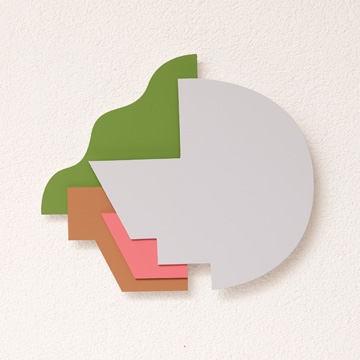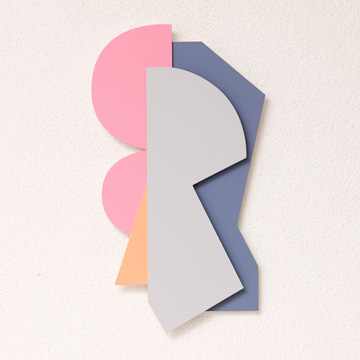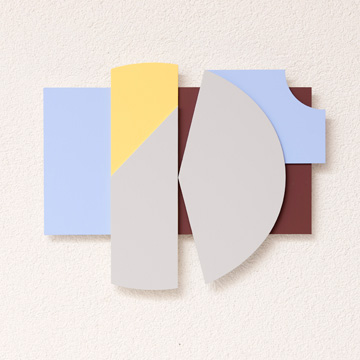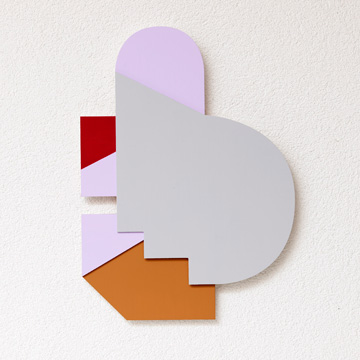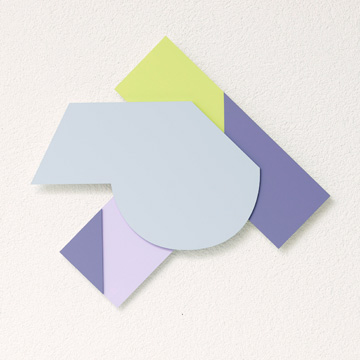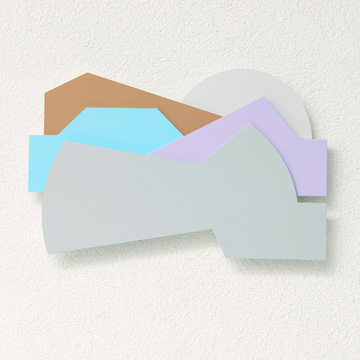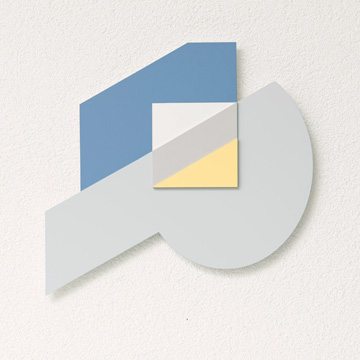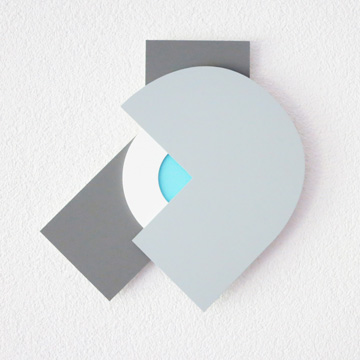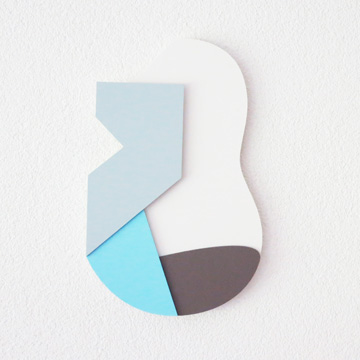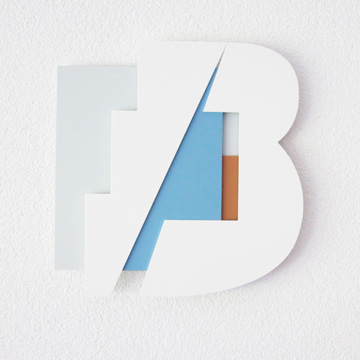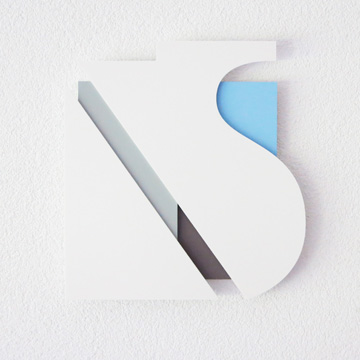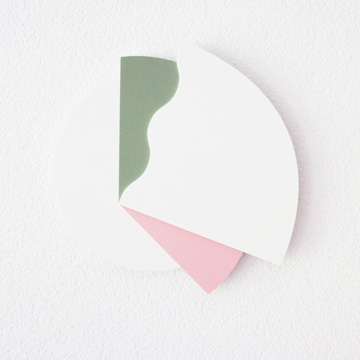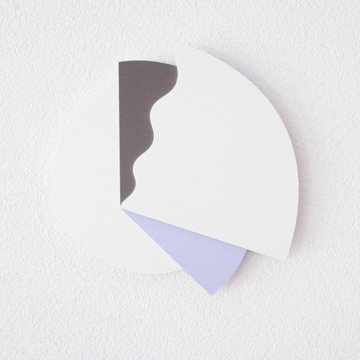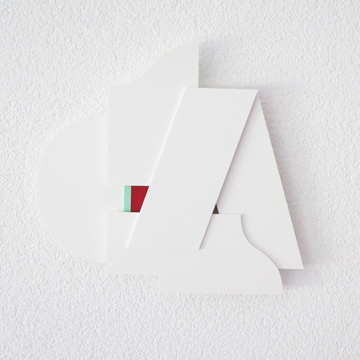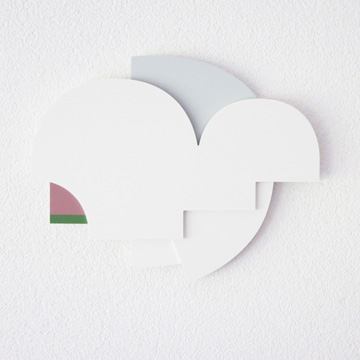The relief is a unique art form. It is a melding of two-dimensional pictorial art with three-dimensional sculptural art. In viewing a relief from different angles, shadows cast by the different layers will shift, and the colors will seem to change slightly.
The color relief series began with the idea of stepping away from the confines of a traditional rectangular canvas and moving from two- to three-dimensional forms of expression. Various geometric forms were used to create playful and provocative new visual compositions. Instead of being painted on a single surface, each color was painted as a separate individual form, to be combined afterward.
The color relief consists of individual shapes derived from the square, the rectangle, the triangle, the circle, and the ellipse and – occasionally – from certain letters of the alphabet. The forms develop optically, they are refined and adjusted continuously to achieve a harmonious composition, and are also explored in a series of preliminary sketches and small-scale collages. The final composition gradually evolves through this playing with forms and color. Nothing in its creation is either systematic or schematic.
The contours of the forms are extremely important, in the complex ways they intersect and relate to each other: there are interesting contrasts between various horizontal, vertical, slanted, straight and curvilinear edges.
The relief consists of several layers. Each layer obscures parts of the layers beneath it. The viewer is invited to speculate about what is hidden: what does the obscured part of the form look like? Does it relate to the other forms and if so, how?

